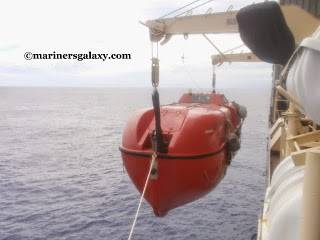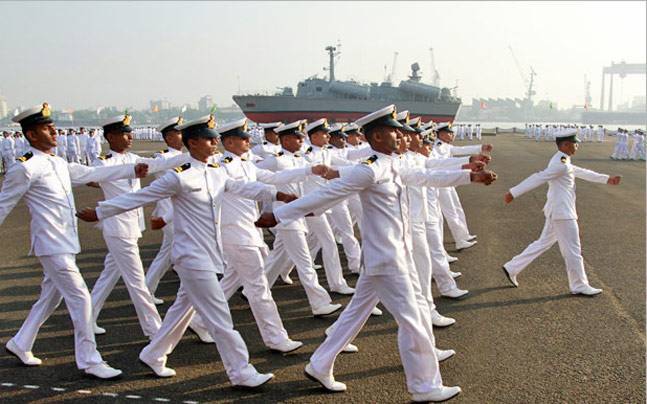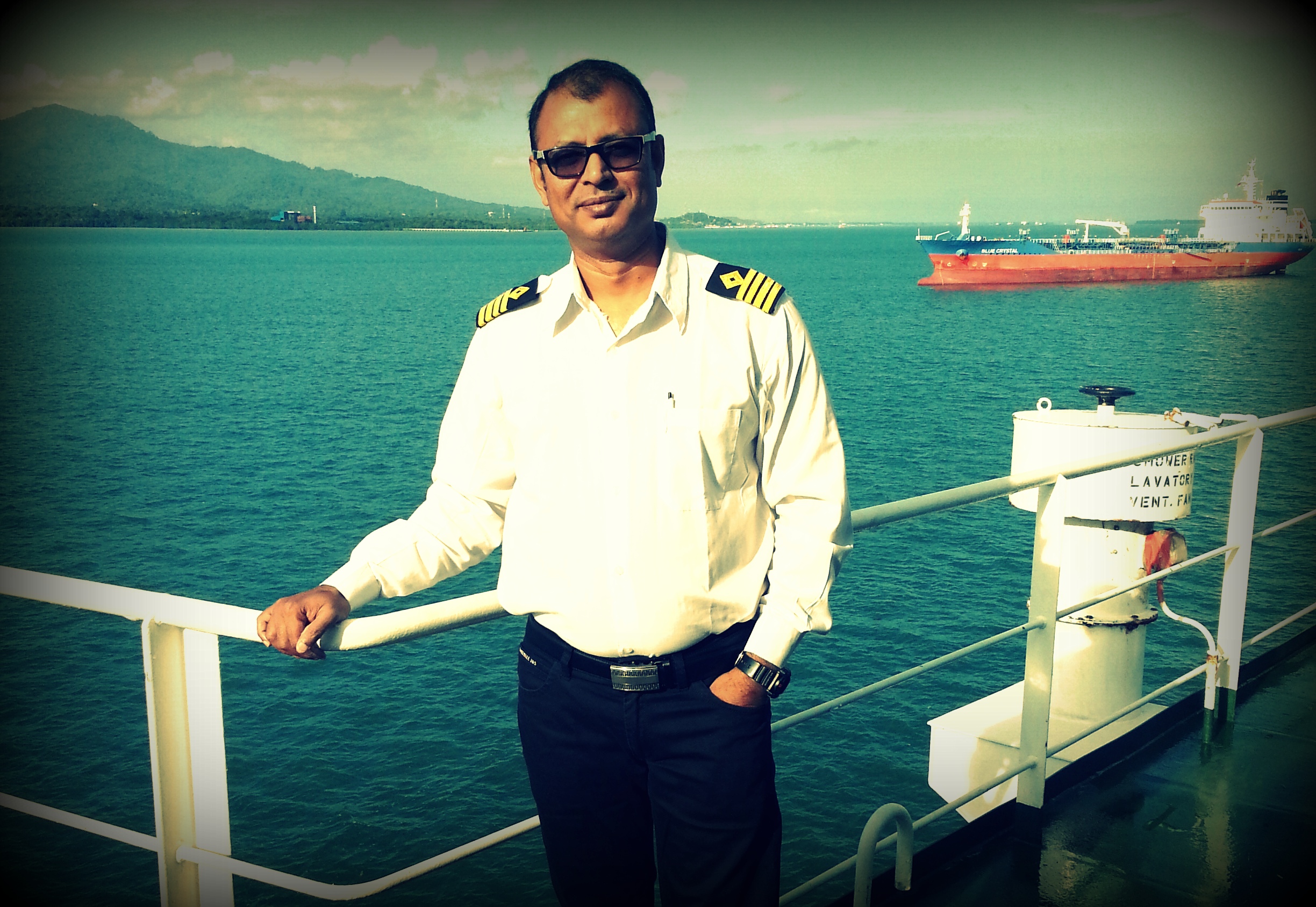Get to know about Drills On board Merchant Vessels like Abandon Ship, Fire Drills, Man Overboard Drill, Oil / Chemical Spills, Enclosed Space Entry, Flooding, Collision, Grounding Drills, Blackout Training, Emergency Steering Drill. A Drill is an exercise performed on board (or during training ashore) which may be supervised by a competent authority or personnel. Mostly Such exercises are specialized for a particular event, or emergency. Such Drills ideally should be practiced again and again so that everyone on board is well versed with the situation and is trained enough to tackle if such a situation arises.
Drills On board Merchant Vessels
Here are Drills On board Merchant Vessels:
Abandon Ship
We all sincerely hope no one ever has to experience abandoning the Ship but proper training ensures if such an incident occurs, all the crew members are able to safely abandon the Ship in any condition and proceed to the Lifeboat.
Upon hearing the auditory signal – Seven Short Blasts, One Long Blast, all crew members and passengers are to report to their assigned muster stations and stand in order of their Numbers in the Muster List.The Master gives a verbal order to abandon the ship and the crew members enter the Lifeboat according to their numbers in the Muster List.
According to SOLAS ‘ Every crew member shall participate in at least one abandon ship drill every month. The drills of the crew shall take place within 24 hours of the ship leaving a port if more than 25% of the crew has not participated in abandon ship and fire drills on board that particular ship in the previous month.
Fire Drills
Fires are the major source of accidents on board, Efficient and regular drills ensure the crew members are properly trained to tackle and fight fires.
All crew members are assigned tasks so that everyone works as a team, drills ensure that all members are familiar with their tasks and can perform their best during a real emergency
All crew members are trained in specialized Fire Fighting Appliances like CO2 release system, SCBA, Fireman Outfit Donning etc by Senior Officers.
The crew members are trained to use emergency escape routes when the need arises and also made aware of the company policies regarding such emergencies. A mock drill using all essential fire fighting apparatus is performed so that the effectiveness of the entire team can be gauged and improved systematically.
Man Overboard Drill
Drills ensure if such emergencies are encountered, it is possible to safely recover the overboard crew member (or passenger). Crew members are trained to keep a lookout for spotting the overboard crew member or passenger and are to Shout ‘Man overboard!’ loudly upon spotting
The OOW on the Bridge is informed and a number of turns namely the quick turn (also known as the Q-turn or the figure eight turn), the Anderson
turn, the Williamson turn, and the Scharnow turn can be performed for recovery based on the position and conditions of the victim.The Man Overboard Marker is thrown towards the victim from the Bridge Wing
Oil/ Chemical Spills
It is very important to train the Crew members to react fast and ensure the Pollution is Contained. Company
SOPEP / SMPEP Manuals Procedures should be demonstrated and explained in detail to all crew members. Modern Ships contain all Apparatus required for such operations in the SOPEP / SMPEP Locker.
Strategic Planning is necessary to minimize the effects of such spills, like positioning of Booms and Using rubber Anti static boots and other equipments. Such Equipments reduce the risk of a Fire Hazard. Some Companies require preparedness to control Oil / Chemical Spills before commencing STS Operations
Enclosed Space Entry Procedures
One of the leading causes of accidents while entering such places is Ignorance.
Use of Portable Oxygen Analysers, Tankscopes and Explosimeters should be demonstrated to the crew members.
Rotation of personnel is of prime importance, an entrance attendant is required to ensure logging of entry and exit times of personnel. Oxygen Deficient Atmospheres can lead to Asphyxiation and eventual long term irrevocable damage to Brain cells, even if personnel are rescued and resuscitated. Communication is the key.
All companies nowadays have an enclosed entry check list, all precautions should be discussed with all crew members and all doubts cleared.
Flooding, Collision, Grounding Drills
Flooding can affect the watertight integrity of ship, Flooding can happen due to Leaking Valves, Shipboard machinery and equipment leaks
Grounding can also lead to cracks or failure of Ships’s Hull in areas such as welded joints which may lead to Flooding. Collision may lead to Damage to Ship Structure and affect the Stability and Watertight integrity of the Ship. In all cases, drills ensure that crew members are trained to respond immediately to such situations.
Although every crew member is assigned a task which is explicitly mentioned in the Muster List, it is of utmost importance to ensure they are trained in specific tasks.
If the engine room is flooded, water must not be allowed to ingress the Ship board Machinery generating power required for running the Ships like Shaft generators and Alternators. Operating the emergency bilge ejector valve may help in pumping out the water to control the situation. But it is not to be operated without the consent of the Chief Engineer and an entry in the ORB is required with the date, time and position of the vessel Crew Members should be trained during drills to ensure the function of Bilge Ejector Valve is clear.
Blackout Training
Blackouts render the Ship powerless and everyone on board is affected. Although the emergency backup generator comes into power within 15 seconds and emergency batteries ensure adequate lighting is available. Often the crew morale plunges to an abysmal low owing to the pitch black conditions for some time.
Proper Training ensures The crew members are well prepared to handle such a situation. Do NOT Panic.
Procedures to be followed during Blackout :
1. Inform Bridge and Duty Engineer
2. Display Not Under Command Signals / Shapes and Acknowledge Alarms
3. Check for Traffic in Immediate Vicinity, Whistle and VHF may be used to communicate.
4. A Steering gear Motor (usually Number 2) is powered through Emergency System, Use it for emergency navigation, if required.
5. If Main Propulsion Machinery is running, Cut off Fuel by bringing Lever to Zero
6. Close Feed of Purifier and ensure no wastage of Fuel and Overflow occurs
7. Shut the Boiler Main Steam Stop Valve to maintain Steam Pressure.
8. Start the Pre Lubrication pump run by Emergency Generator Power before Starting the generator
9. Immediately start main engine jacket cooling water pump and main engine lube oil pump as soon as the generator is taken on load. Switch on according to the Preferential Trip Sequence to ensure Non Essential Machinery is not powered.
Emergency Steering Drill
Emergency steering gear drills must be carried out at least once every three months to ensure that emergency steering procedures are practiced.
According to SOLAS, All ship’s officers concerned with the operation and maintenance of the steering gear shall be familiar with the operation of the steering systems fitted on the ship and with the procedures for changing from one system to another. Testing and Demonstration of All Alarms and Trips, Working of Gyro Repeater Unit, Rudder Angle Indicator, All Linkages etc. Ship Specific Emergency Steering Procedure, like Solenoid Operated Pump Control.
Now, all this seems important enough. Then why do people show a lack of interest or eagerness to participate in the drills?
·
Accumulated Fatigue of personnel due to mismanaged Rest and Work Hours
·
Over confidence of personnel on ship board practices
·
Not able to place enough importance on the ship board procedures
·
The reasons can be Many, but mostly could be attributed to have been stemmed out of the afore mentioned points. We are all part of a team that has to perform efficiently together so that ship board operations can be done safely and in
time. Every one has an important contribution right from the Highest Ranked Officer to the lowest trainee or rating on board.We must understand that planning and execution of drills by the Ship Staff is not only a SOLAS and also in some cases, Legal requirements of Local Authorities, But it is also, in our Best interest. We all wish to perform our duties, complete our contracts and return home to
our families in the best of our health. Announcements of Drills are often thought to be Machiavellian Schemes to disturb the crew during their rest hours. In most cases it is not, and well, in other cases we all have endured Such Bosses J
Image Credits: Respective portal and authors. Used for information purpose only.










do we use to conduct find bomb on board drill
this should be continue because it give me picture of what happen at sea even in the classroom…right now i can answer confidently, so many attached questions…….very helpful